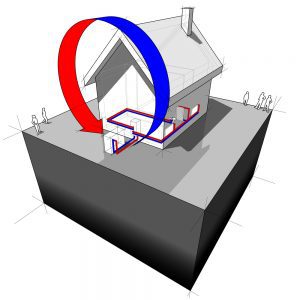How To Calculate SEER Ratings
Seasonal energy efficiency ratio ratings, which are often referred to as SEER ratings, are incredibly useful pieces of information for consumers. If you are considering installing a new cooling system or thinking about upgrading your existing equipment, knowing how to calculate SEER ratings and understanding the relationship between these numbers and energy usage can help you keep cool while snagging substantial savings.

A SEER rating is a measurement used to describe how efficiently an air conditioner or cooling system utilizes energy over the course of a cooling season. It is an expression of a system’s total cooling capacity divided by the total energy input. Whenever you are weighing the pros and cons of various cooling systems, you will want to determine their SEER ratings. There are a few ways to do it.
Energy, Efficiency, And Equations
As its name makes clear, a SEER is a ratio, so if you can plug the right numbers into the equation and do a little math, you can solve for the SEER rating of a cooling system. Are you curious about how to calculate SEER ratings and ready to try your hand at it? You’ll need to start by locating two numbers. A British thermal unit is the amount of heat needed to raise the temperature of a pound of water by 1 degree Fahrenheit. It is also a unit used to describe a cooling system’s performance. Look in your system’s manual or on its data plate for the number of Btu per hour used by the equipment. While you’re at it, be sure to note down the number of watts used per hour. This figure should also be listed in the manual or on the data plate.
The average cooling season is four months, which is approximately 1,000 hours, so to determine the number of Btu used in an average season, multiply the number of Btu per hour by 1,000. Next, find the total number of watts used in an average season by multiplying the number of watts used per hour by 1,000. Finally, calculate the system’s SEER rating by dividing the number of Btu used in a season by the number of watts used in a season.
Solving For SEER Without Math
If math isn’t your strong suit, don’t panic. You don’t need to learn how to calculate SEER ratings to determine a cooling system’s rating. The manufacturer typically provides the number, and there are several ways to find it:
- Look for the yellow and black rating stickers. Found on the side of the condenser, it clearly states the system’s SEER rating.
- Look for an information sheet affixed to the front of the air handler, the interior unit. The SEER rating is also listed here.
- Review the building permit for the cooling system; the SEER rating is normally listed on it.
- Locate your system’s model number and serial number. Contact the manufacturer and ask them about the SEER rating.
Why SEER Ratings Matter?
Why do SEER ratings matter? A quick glance at a cooling system’s SEER rating can tell you how efficiently it uses energy. The higher the SEER rating, the more efficient the system is.
- The Benefits of Energy Efficiency: Making energy efficiency a priority benefits both the environment and your wallet. Choosing a cooling system that can do more while consuming less energy is eco-friendly because it reduces your energy demands, so fewer resources are required to provide the power that you need. And, since you’ll need less power to maintain a cool, comfortable environment, you’ll enjoy lower energy bills. Over the life of a cooling system, that can add up to significant savings.
- Calculating Annual Energy Costs with SEER Ratings: SEER ratings do more than tell you that one system is more efficient than another. They also provide a way to determine the approximate operating cost for the system. This allows you to weigh the potential savings against the upfront costs of installing a particular system. How do you do it? To determine the annual operating cost for a cooling system, multiply the system’s SEER by your electric rate. Since the average cooling season is 1,000 hours long, multiply the product by 1,000. The answer you get is the approximate annual operating cost.
While SEER ratings are an important factor to investigate when evaluating cooling systems, they are just one consideration. At Long Heating and Cooling, we are committed to serving our community by providing top-notch heating and cooling services. We delight in helping our customers choose the best system for their needs, so let us put our 35 years of industry experience to work for you. To learn more, contact us online or call us at (417) 581-8138.








